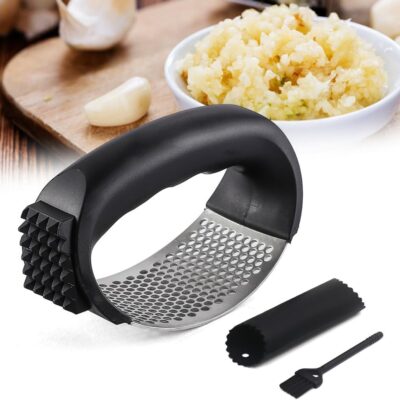
Every parent wants to keep their baby sleepwear guide cozy, safe, and sound asleep through the night. But figuring out what your baby should wear to bed can be tricky, especially with changing seasons and a baby’s sensitive skin. With some fundamental tips, you’ll know how to dress your little one serenely and securely for a quiet night’s rest. We should make a plunge!
Essential Things to Consider for Baby’s Sleepwear
When choosing sleepwear for your infant, keep these essential factors in mind:
- Babies are more susceptible to temperature changes than adults because they are unable to control their core body temperature. Their degree of comfort is greatly impacted by everything, from the room’s temperature to the clothes they wear to bed. Wear layers based on the time of year and stay away from temperatures temperature range: 20–22 degrees Celsius (68–72 degrees Fahrenheit).
- Making sure you’re sleeping in a safe place is paramount. Stay away from anything that could suffocate someone, such as stray blankets or strings. Rather than using blankets, opt for baby-specific sleepwear such as sleep sacks or well-fitting pajamas.
- Stick to soft, breathable textiles for babies because harsh fabrics might hurt their sensitive skin. They are more likely to fuss or wake up if they are uncomfortable, which will interfere with both your and their sleep.
How to Dress Your Baby for Different Seasons
As seasons change, so does the best approach to dressing your baby for sleep. Here’s a breakdown for each season to make things easy:
- Summer: When it’s warm, less is more. A light cotton onesie or short-sleeved bodysuit is often enough, especially if the room is warmer. On slightly cooler nights, you can add a lightweight sleep sack made from a breathable fabric, which adds a layer without overheating.
- Winter: Winter calls for a little more bundling. Start with a soft cotton onesie as a base layer, then add warm-footed pajamas or a thicker sleep sack. Wool or fleece sleep sacks work well for extra warmth, but be careful not to over-layer, as this can make your child overheat.
- Spring and Fall: These transitional seasons can have unpredictable temperatures. Layering is essential here. Lightweight cotton pajamas with a medium-weight sleep sack are usually a good choice. Just monitor the room temperature and adjust layers if the night is warmer or cooler than expected.
Types of Sleepwear for Babies
With so many types of baby sleepwear guide available, here’s a quick look at what works best:
- Swaddles: Swaddling often comforts newborns and helps prevent the startle reflex from waking them up. Go for breathable fabrics like muslin or cotton, and make sure not to wrap too tightly, especially around the hips and legs. Most experts recommend transitioning out of swaddles once your baby is around 8-12 weeks old or starts to roll over.
- Sleep Sacks: Wearable blankets like this are perfect for babies who are no longer swaddled but still need a warm covering. Babies may stay warm without tripping over loose blankets with the help of sleep bags, which come in different thicknesses for each season. Some also have adjustable armholes for even more freedom of movement.
- Footed Pajamas: These one-piece pajamas cover your baby from neck to toe, making them great for cooler weather. Look for cotton fabrics, which are soft and breathable, allowing for natural temperature control. Zippers can make diaper changes easier, especially at night!
Each of these sleepwear types can help keep your baby snug and secure. Select the one that best suits your comfort requirements, your home’s temperature, and your baby’s age.
Choosing the Right Materials for Baby’s Sleepwear
The texture your child wears to bed has an enormous effect in solace and security. Here is a once-over of probably the best materials to consider:
- Cotton is a popular fabric for infant bedding. It is gentle on delicate skin, breathable, and velvety. It also absorbs moisture naturally and is easy to wash, so even if your baby perspires a bit, it will keep them comfy.
- Merino Wool: Known for its natural temperature-regulating properties, it can be a great option in warm and cold conditions. It wicks away moisture and prevents your baby from feeling too hot or cold. While it’s more expensive than cotton, it’s worth it for chillier nights and babies needing extra temperature regulation.
- Avoid Synthetic Fabrics: While polyester and other synthetic fabrics may be budget-friendly, they tend to trap heat and can make your baby sweat. Adhere to natural fibers such as wool and cotton whenever possible, as they’re typically better at managing temperature and are gentler on the skin.
Choose fabrics that have been certified safe for babies, like those with OEKO-TEX certification, which ensures they’re free from harmful chemicals.
Suggestions for Getting Your Infant to Sleep Alright
Once you’ve selected the right baby sleepwear guide, To ensure your infant is comfortable, heed these suggestions all night long:
- Check Their Temperature: Feel the back of their neck to see if your baby is comfortable. If it feels warm but not sweaty, they’re likely just right. Babies’ hands and feet can be more relaxed, so don’t rely on these areas to judge if they’re too hot or cold.
- Layer Wisely: Wear a sleep sack or footed pajamas on top of your onesie if it’s cold. In warm weather, a single layer, such as a bodysuit or cotton onesie, is usually sufficient. Avoid wearing too much clothing because this might lead to hyperthermia, which is a common risk factor for SIDS.
- Prevent Overheating: Keep an eye out for symptoms like wet hair, flushed cheeks, or if your infant appears particularly warm. If they appear excessively hot, try taking off a layer or changing the room temperature. It is generally not advised to cover a baby‘s head when they sleep because this can retain heat.
To keep your newborn child from overheating while they rest, take a stab at different styles of sleepwear and watch out for them over the course of the evening.
Conclusion
Guaranteeing your baby sleepwear guide fits properly is connected to the guideline of room temperature, solace, and simplicity. By picking breathable materials, dressing them as per the season, and keeping away from free covers, you can help your little one rest sufficiently. Watch out for your child’s solace levels and change depending on the situation until you find what turns out best for them. Since each child is unique, follow your stomach Moreover, go ahead and make changes. With these simple ideas, you’ll be well on your way to creating a safe and comfortable resting environment so that you and your baby can sleep soundly. Dream pleasant dreams!
If you want to learn my #1 Gerber Baby Boys 4 Pack Sleep ‘N Play Footie, Click Here Now.






